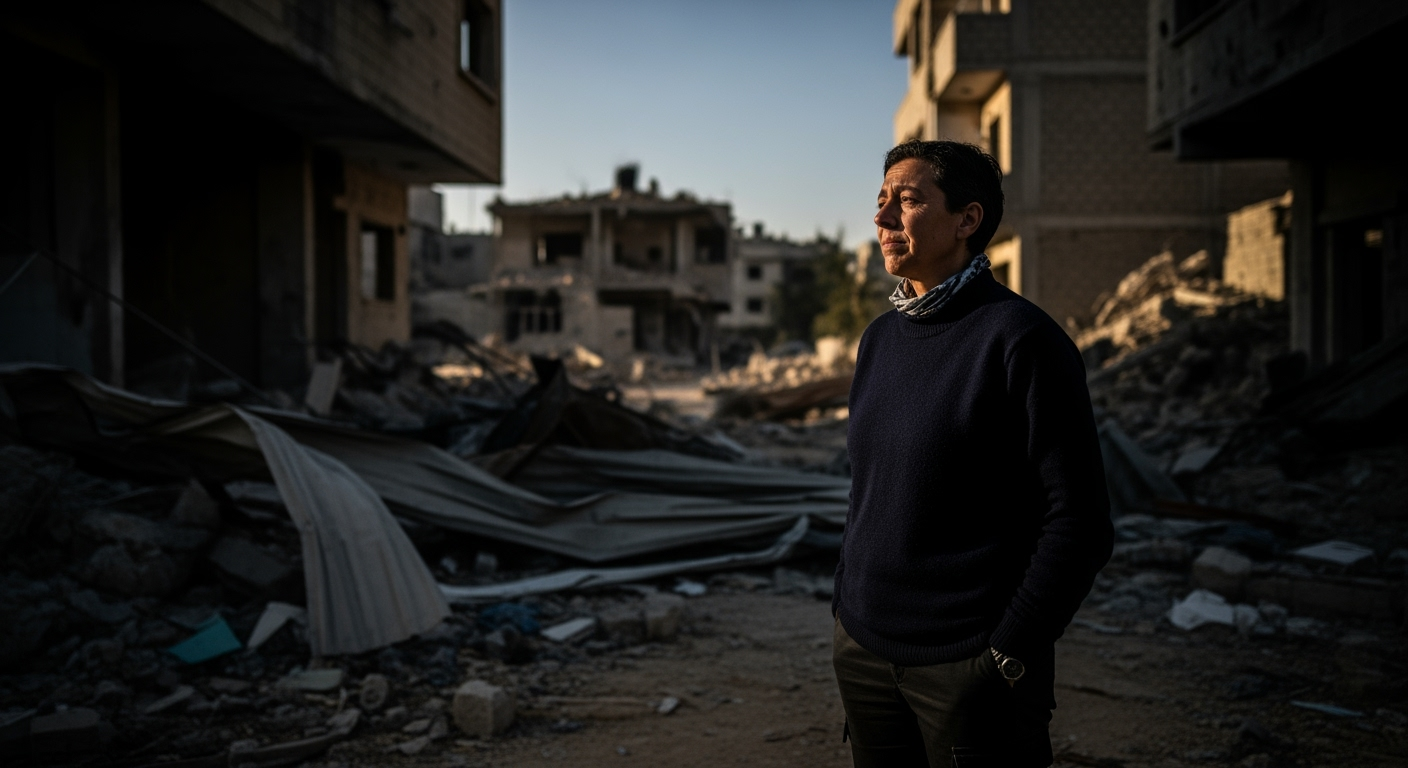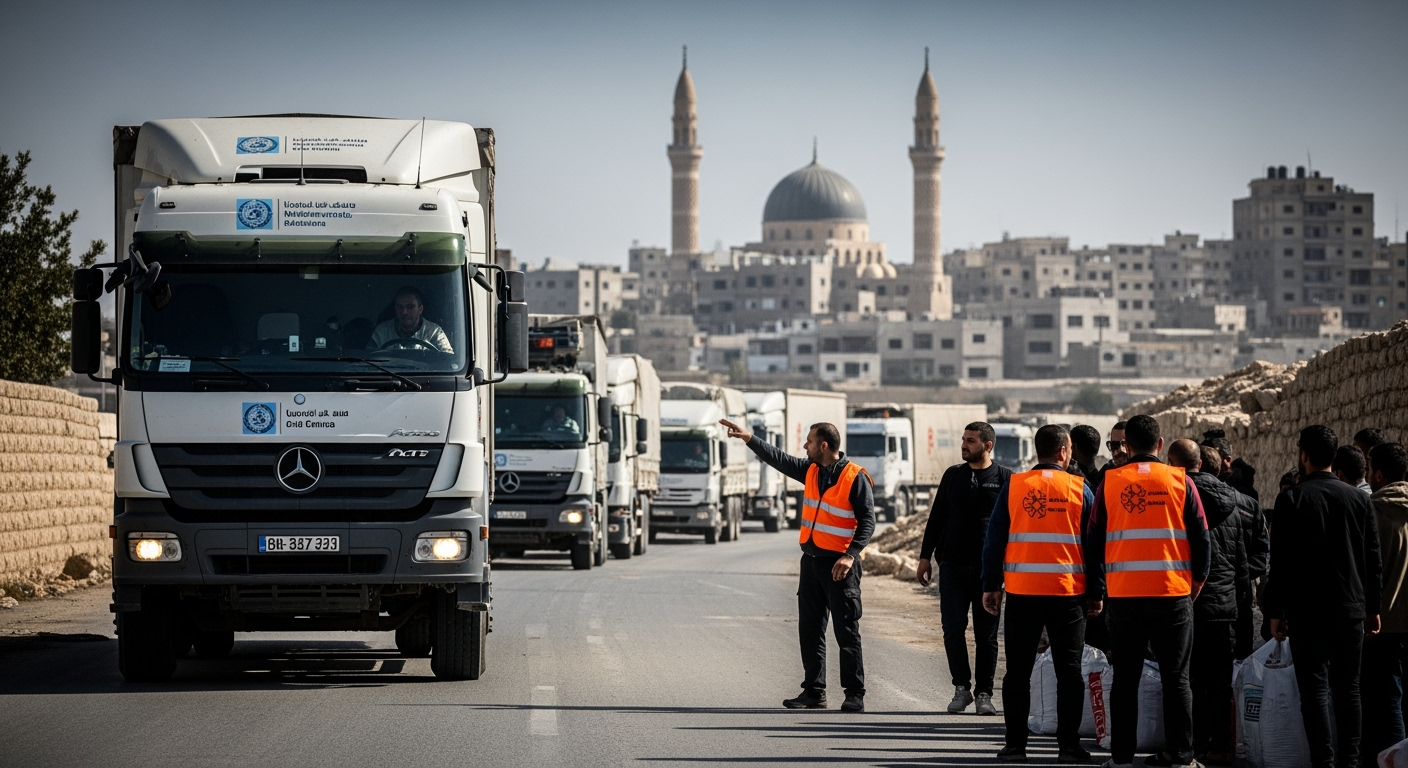Related Articles

M23 Rebels Intensify Eastern Offensive Amidst Rhetoric of March to Kinshasa

Turkey Emerges as Critical Player in Gaza Ceasefire Diplomacy





Gaza City, Gaza Strip – A deepening humanitarian crisis in the Gaza Strip has pushed more than half a million Palestinians into catastrophic levels of food insecurity, with famine now confirmed in northern areas, underscoring severe limitations in the speed and volume of desperately needed aid reaching the besieged enclave. Despite urgent international calls and ongoing relief efforts, logistical hurdles, security concerns, and political obstacles continue to impede the consistent and large-scale delivery of life-saving supplies, leaving a population of over two million on the brink of starvation. The struggle to accelerate aid inflows highlights a complex web of challenges that prevents food, water, and medicine from reaching those who need them most.
The humanitarian situation in Gaza has deteriorated to an unprecedented extent, with over half a million people experiencing catastrophic conditions characterized by starvation, destitution, and death, according to the latest Integrated Food Security Phase Classification (IPC) reports. An additional one million people are facing emergency levels of food insecurity. Famine has been confirmed in Gaza Governorate, with projections indicating its expansion to Deir al-Balah and Khan Younis governorates by the end of September. The impact on the most vulnerable is particularly acute, with acute malnutrition among children under five having more than doubled over the past year. At least 132,000 children under the age of five are at risk of death from malnutrition by June 2026. Before the recent intensification of hostilities, over 80% of Gaza's population already relied on humanitarian aid for their basic needs, a dependency that has only worsened. The combined effects of an 18-year blockade, denial of access to natural resources, and impoverishment have significantly contributed to chronic food insecurity. Reports indicate that more than one in three people are now going days without eating.
The primary bottleneck for humanitarian aid entering Gaza lies at its border crossings. While crossings like Rafah and Kerem Shalom are critical conduits, they have been plagued by closures, limited operating hours, and stringent inspection processes. Hundreds of trucks laden with aid have been observed waiting for weeks at Egypt's Rafah crossing. Israeli inspections of aid cargos have been cited as a major slowdown, with seemingly arbitrary rejections of vital humanitarian equipment. Items such as water testing equipment, medical kits for delivering babies (due to included scalpels), and solar-powered equipment have reportedly been denied entry. These rejections significantly exacerbate the crisis, particularly in an enclave where central electricity has collapsed and fuel for generators is scarce.
The number of trucks entering Gaza remains far below the necessary levels. Before the conflict, approximately 500-600 aid trucks entered Gaza daily. Aid organizations estimate that 1,000 to 1,500 trucks are needed daily to alleviate starvation and meet humanitarian needs. However, daily entries have often averaged around 120 trucks, a mere fraction of what is required. This "trickle" of aid, as described by some agencies, is insufficient for a population of 2.3 million Palestinians almost entirely dependent on these supplies for survival. Aid delivery is further obstructed by multiple checkpoints within Gaza and pervasive insecurity, making internal distribution fraught with danger. Lawlessness and the reported stopping and rifling through of cargo by armed men have added another layer of complexity to humanitarian operations within the Strip.
In response to the severe restrictions on land routes, alternative methods of aid delivery have been explored, including maritime corridors and airdrops. The European Union, in conjunction with other nations, established a maritime corridor from Cyprus, which also utilized a newly constructed U.S. pier. While intended to complement land routes, this maritime corridor was not a substitute for the necessary scale of land deliveries. The U.S. government allocated approximately $230 million to the operation, but despite its high-profile launch, the maritime corridor proved inefficient and was largely abandoned after operating effectively for only about 20 days. Experts and aid agencies have criticized such initiatives as costly and limited in their impact. Civilian-led flotillas attempting to deliver aid and break the blockade have also faced interception by Israeli naval forces.
Airdrops have also been employed by various countries, including the United States, Jordan, Egypt, France, Qatar, and the United Arab Emirates. However, humanitarian organizations are largely critical of airdrops, labeling them as inefficient, expensive, and dangerous. Airdrops deliver small volumes of aid, often fail to reach those most in need, and can lead to tragic incidents, including deaths and injuries. For example, five people died when a parachute failed to deploy, causing an aid package to fall on people in March of last year. Stampedes and injuries can occur as desperate civilians rush to retrieve dropped supplies, and without coordinated distribution, aid often doesn't reach the most vulnerable in an equitable manner. Many within Gaza view airdrops as symbolic gestures rather than effective humanitarian solutions.
Recent ceasefire agreements have brought a glimmer of hope for increased aid delivery. Following a ceasefire agreement, UN aid agencies have mobilized to scale up assistance. The United Nations has a "detailed and tested" 60-day plan to deliver 170,000 metric tons of food, medicine, and other supplies into Gaza, aiming to increase supplies to hundreds of trucks daily. UN officials underscore the "indispensable role" of the United Nations Relief and Works Agency for Palestine Refugees (UNRWA) in aid distribution, despite challenges like funding cuts and bans on international staff entry into Gaza.
As part of recent agreements, Israel has reportedly agreed to allow 600 aid trucks carrying food, medical supplies, shelter equipment, fuel, and cooking gas to enter Gaza daily via the Rafah crossing. This increase, if sustained and fully implemented, is crucial. However, the conditions on the ground still pose significant challenges to the implementation of any scaled-up aid delivery. Complex authorization procedures, limited clearance capacities, and unpredictable rejections of cargo continue to delay humanitarian movements. Inside Gaza, looting, including by armed groups, further hampers operations. Tragically, the risks faced by aid workers remain immense, with at least 270 killed since October 2023, and over 370 UNRWA staff members among the casualties. Civilians themselves are also dying while attempting to access aid supplies, with over 2,600 fatalities reported since May 2025 in such incidents.
The immediate and urgent opening of all border crossings to allow for a sustained, unimpeded flow of humanitarian assistance remains critical to avert further mass starvation and widespread illness. Without reliable access, adequate security for aid workers, and an efficient distribution network, the rapid delivery of desperately needed food and aid to Palestinians in Gaza will continue to be an arduous and often perilous endeavor, with tragic consequences for an already suffering population.